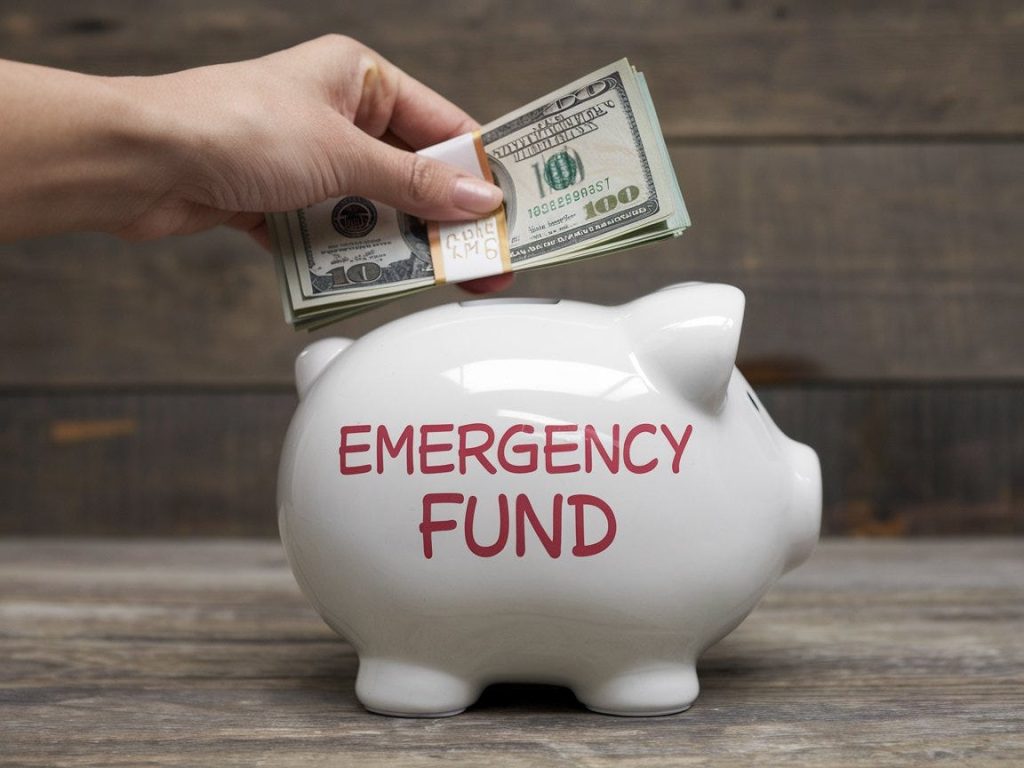In times of economic uncertainty, the importance of emergency funds cannot be overstated. These financial safety nets provide individuals and families with the necessary breathing room during turbulent periods.
Anúncios
Whether it’s a sudden job loss, an unexpected medical expense, or a global economic downturn, having an emergency fund can make all the difference. In this blog post, we will explore the significance of emergency savings, especially in the United States, and how they serve as a vital tool for financial stability.
The importance of emergency funds

Emergency funds are the cornerstone of financial planning. They are typically a reserve of three to six months’ worth of living expenses, set aside for unforeseen circumstances. During economic uncertainty, these funds provide immediate access to cash, supporting day-to-day needs without financial strain. Their significance grows in environments where job security is volatile, and other income sources are less predictable.
In the US, where the cost of living can vary significantly across regions, having a planned reserve is crucial. Such funds help individuals avoid falling into debt traps that may arise from sudden financial demands. It’s a form of self-insurance that can prevent monetary devastation and provides peace of mind, knowing there is a cushion in place for life’s unexpected turns.
Moreover, emergency savings alleviate the psychological stress associated with financial instability. Knowing that a safety net exists allows individuals to focus on long-term financial goals, rather than being consumed by immediate financial crises. This balance between immediate security and future planning is vital for overall economic well-being.
Building an emergency fund
The first step to creating a buffer is determining the target amount. Generally, it’s recommended to accumulate three to six months’ worth of essential living expenses. This estimation should include rent or mortgage, utilities, food, transportation, and any other basic needs. Having this calculation helps in setting a concrete savings goal, tailored to each individual’s financial situation.
Once the target is established, the next step is building the fund systematically. Start by setting aside a small, manageable amount from each paycheck. Even if it’s a modest contribution, consistency is key. Gradually increasing the savings rate over time helps in achieving the desired reserve without added financial pressure.
Additionally, it’s essential to choose a safe and accessible account to store these funds. High-yield savings accounts or money market accounts are popular choices, offering liquidity and some interest income. Avoid investments that carry a risk of loss or lock-in periods, as the primary goal is immediate accessibility in times of need.
Common challenges and solutions
While the concept of maintaining an emergency reserve is straightforward, implementation can be challenging. One common obstacle is the temptation to dip into these savings for non-emergencies. To combat this, it’s crucial to clearly define what constitutes an emergency and remain disciplined in using the funds only for genuine crises.
Another challenge is balancing emergency savings with other financial priorities like debt repayment or retirement contributions. To address this, consider adopting a balanced approach. Allocate a portion of your income to both emergency savings and other financial goals, ensuring that progress is made on multiple fronts simultaneously.
Finally, significant life changes such as marriage, the birth of a child, or relocating can affect one’s financial situation. It is important to reassess and adjust the target fund amount periodically to reflect these changes. Regular financial reviews help maintain the adequacy and relevance of your emergency fund in accordance with life changes.
The role of emergency funds during economic downturns
During economic recessions, having an emergency fund becomes even more critical. With the possibility of increased unemployment rates and reduced economic activity, financial buffers are essential. They provide stability, allowing individuals to manage their basic needs without the immediate pressure of finding new income sources. This safety net supports long-term financial resilience.
Furthermore, during downturns, having access to liquid savings prevents individuals from needing to liquidate long-term investments, often at unfavorable terms. This helps preserve wealth and mitigates the risk of eroding financial stability. Flexibility in times of economic distress is invaluable, and emergency savings provide that much-needed adaptability.
The psychological comfort provided by a financial cushion cannot be understated. It empowers individuals and families to make rational and well-considered decisions rather than reactive and potentially detrimental choices. This assurance is a key factor in mitigating financial anxiety and ensuring effective decision-making during challenging economic times.
Conclusion: the ongoing necessity of emergency funds
Despite the economic ups and downs, one thing remains clear: the necessity of maintaining an emergency fund. This financial safety net is a timeless tool for safeguarding against life’s unpredictability. By consistently contributing to and preserving this reserve, individuals can bolster their economic resilience.
Furthermore, fostering a habit of saving for emergencies not only protects against unexpected costs but also cultivates a mindset of financial discipline. This disciplined approach is instrumental in achieving broader financial security and success.






